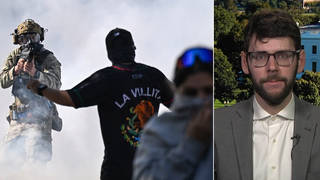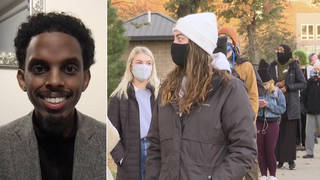As the world leaders prepare to discuss solutions to global warming at the G8 meeting, more warnings are coming from the scientific community about climate change. A new United Nations report has determined that Greenland’s ice cap is already melting at alarming rates and that the temperatures in polar regions are expected to rise twice as fast as the global average in coming decades. This is Koni Steffen of the University of Colorado-Boulder.
Koni Steffen: “Warmer temperatures in spring, warmer temperatures in fall made the melting period in Greenland much longer. Therefore we see more and more melt water flowing off the ice sheet into the ocean and decreasing the reflection of the sun, which has a feedback. We call it a positive feedback mechanism, and we have seen that over the last 15 years there is a steady increase of melt from the ice sheet.”
Koni Steffen said the melting ice caps could have dire effects on sea levels.
Koni Steffen: “If you take, for example, this glacier, Jakobshavn Isbrae, and you take the volume of these icebergs that are breaking off every two to three days — they are breaking off constantly, but let’s take the volume of two to three days’ iceberg — this is enough fresh water for the entire city of New York for one year.”










